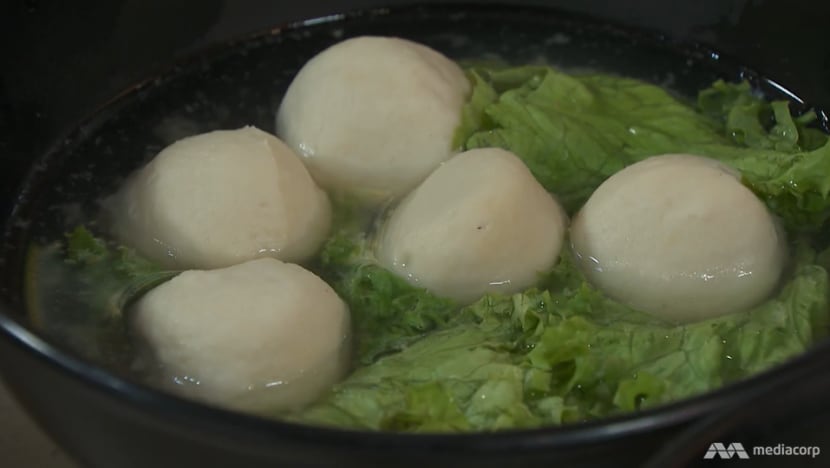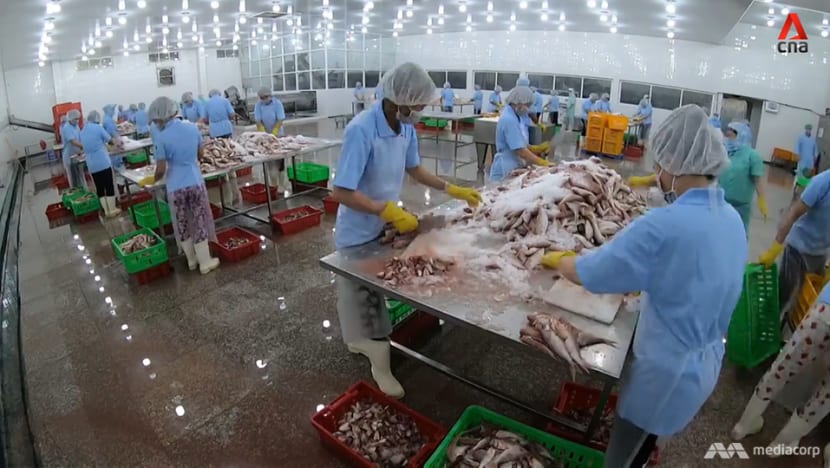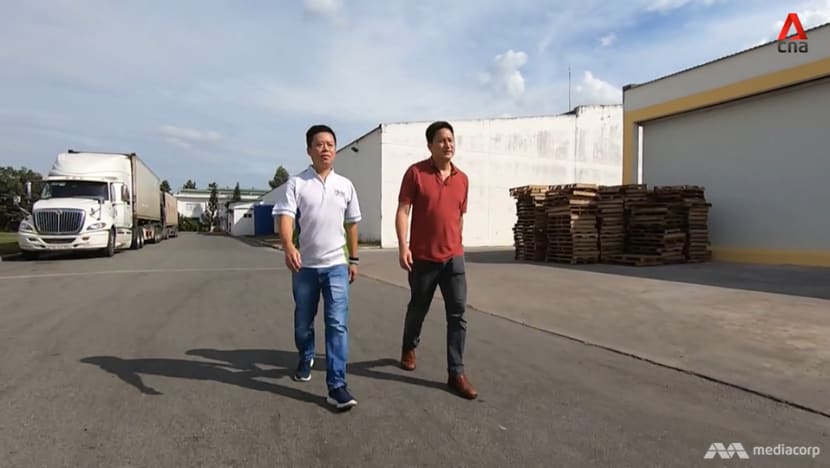Singapore’s fish balls could get unhealthier in the near future
Is it just fish meat inside this hawker staple or is there more to it? The programme Talking Point tracks down the source of a key ingredient and finds out a supply issue could erupt.

SINGAPORE: Fish balls are not only a staple in Singapore’s hawker landscape, they are also one of Singaporeans’ two most favourite processed foods, according to the first study of its kind here.
Nearly 8,000 Singaporeans ranked fish balls alongside chicken nuggets in the survey of ultra-processed foods conducted by the Singapore Management University in collaboration with the programme Talking Point.
READ: What really is in the chicken nuggets you like so much
And of all the fish that fish balls here are made from, the one that a lot of Singaporeans prefer the taste of, said Randall Ang, is itoyori (threadfin bream).
That is what goes into the fish paste, or surimi, used in the BoBo brand of fish balls produced by Ha Li Fa, where Ang is the business development director.

His company, one of the largest among the 30-plus makers of fish balls in Singapore, imports this paste from a few countries in the region.
One of them — one of the top three sources of Singapore’s surimi — is Vietnam, which exported 9,300 tonnes of it to Singapore in 2018.
To find out what exactly goes into this paste, and why Singaporeans are so hungry for fish balls, programme host Steven Chia visited Vietnam.
What he learned was that Singaporeans’ fish balls could get unhealthier in future because of a dwindling supply of itoyori.
WATCH: What's really in my fishballs? (24:02)
THE COST OF OVERFISHING
From 2018 to last year, sales of processed meat and seafood products increased by 10 per cent at Singapore’s largest supermarket chain, FairPrice.
But in Vietnam, the fish wholesalers at Tac Cau Wharf in Kien Giang province — one of the busiest wharfs in the Mekong delta — said the haul of itoyori has dropped by about 40 per cent in the past three years.
The reason is overfishing. Over the years, fishermen had been increasing their catch to make more money, resulting in fewer fish in their waters now.
With the supply dropping, itoyori prices have increased by about 50 per cent over the past three years for Li Chuan Food Products, a fish ball and surimi factory in southern Vietnam that exports mostly to Singapore.

It produces surimi made from pure itoyori as well as surimi that comes from a mix of different fish, which costs less.
But because it has been able to absorb the price increase by eliminating middlemen costs, said general manager Tan Han Wei, most of its exports to Singapore are still made from pure itoyori.
Other fish ball manufacturers, however, may mix other kinds of surimi with itoyori surimi or use lower-grade fish to lower the cost, he warned.
“The final step they may be (taking) would be to reduce the fish meat content,” he added. “They could be adding a bit more water … (and) starch to lower the cost.”

As the supply of itoyori continues to fall, this means a higher chance that fish balls sold in Singapore may have more mixed surimi or more starch than before.
A LOOMING ‘DISASTER’?
Currently, the amount of fish meat in Ha Li Fa’s BoBo fish balls ranges from 50 to nearly 100 per cent. Starch, water, ice and seasoning make up the rest of the fish ball.
This complies with Singapore Food Agency regulations, which state that fish balls sold here must contain at least 40 per cent fish meat.
The packaging of some of the fish balls sold in supermarkets, however, does not show the proportion of meat and type of fish used.

And the problem with fish balls that contain more starch is that they contain more carbohydrates than fish balls with 100 per cent itoyori surimi, said dietitian Jaclyn Reutens from Aptima Nutrition and Sports Consultants.
“People who are diabetic need to watch their carbohydrate and starch intake,” she noted. She is especially concerned, however, about what other additives there are inside the fish ball.
For example, one fish ball could have about 50 to 70mg of sodium, she said.
That is about 300 to 400mg of sodium from eating five to seven fish balls in one sitting, which she cautioned is a “significant” percentage of the 2,000mg of sodium a person should have a day.

Some fish ball manufacturers do add flavour enhancers like monosodium glutamate (MSG), pointed out Jerome Lim, who manages fish ball noodle chain Ming Fa Fishball. But there is no good substitute for itoyori surimi up to now, he said.
“No other fish can have the same texture,” he added, lamenting the possibility of a dwindling supply. “If that's the case, we’d have to fall back on (fish balls with more starch). Then I think there’d be a disaster.”
Watch this episode of Talking Point here. New episodes on Channel 5 every Thursday at 9.30pm.

















